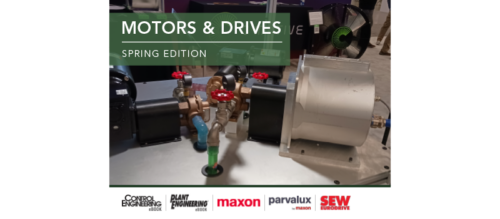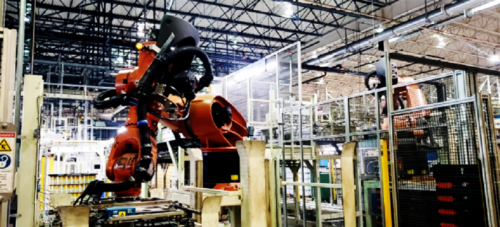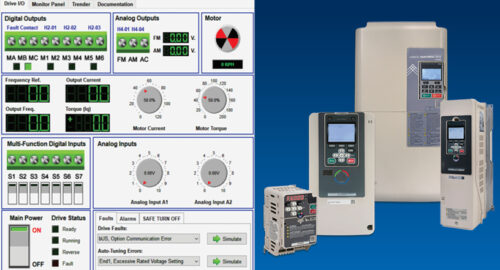Installing VFD reduces costs and noise
The Eliza Furnace Trail in downtown Pittsburgh gets its official name from the blast furnace that used to dominate the old J&L steel mill along the Monongahela River.
Tom Logan, Frank Kordalski, and Brian Silowash
The Eliza Furnace Trail in downtown Pittsburgh gets its official name from the blast furnace that used to dominate the old J&L steel mill along the Monongahela River. It gets its unofficial name “The Jail Trail,” because it starts near the new Allegheny County prison.
The Eliza Furnace is long gone, but one remaining feature of the former J&L works is a galvanizing line owned and operated by MetalTech.
MetalTech manufactures hot-dipped galvanized strip for use in electrical enclosures and miscellaneous construction applications. During the galvanizing process, the continuous strip of carbon steel is dipped in a molten zinc bath, called a “pot.” After the strip emerges from the pot, a pair of slotted nozzles, called “air knives,” blows the excess zinc from the strip. The flow of compressed air through these knives controls the thickness of the zinc coating applied to the strip.
The air is compressed by a 250 hp, 3600-RPM blower. At the time of installation in the late 1960s, air coating control was a new technology. Because energy costs were a secondary concern, it was common for such equipment to be oversized. In order to achieve the desired flows and pressures at the air knives, and prevent the blower from operating in the surge region, a 10” diameter bypass line was provided to exhaust excess air capacity through a modulating valve. In order to reduce the resulting noise, a large silencer was installed at the end of the blowoff line along Second Avenue.
That silencer is just a stone’s throw away from the Jail Trail, between mile markers 2 and 3. Because the trail is in an urban setting near traffic, it is not exactly a quiet bucolic setting. Still, the blowoff was very noticeable, and contributed to the ambient noise.
Aging installations that remain not just operable but profitable, have a way of seeking their own level, and when the inlet guide vanes became inoperable, the plant settled into a steady-state operation that allowed the blowoff valve to be set in a constant throttled position. The only process variables that had to be adjusted were the position of the air knives, and the positions of the 2 throttling valves that controlled the air flow to the knives.
In late 2003, a study was undertaken to determine if converting the constant speed motor to one driven by a variable frequency drive (VFD) might save energy. Based on operating data, the consulting engineer determined that it was possible to reduce the speed and still achieve the necessary flow and pressure. In fact, if the blower could be kept away from its surge point, the noisy blowoff line could be rendered obsolete.
Because power varies with the cube of the speed, even a slight change in speed can result in significant savings. The estimate for this retrofit was that the speed could be reduced to approximately 2430 RPM, based on an average product mix (the higher the flow, the thinner the coating). The blower manufacturer was contacted for new curves for the predicted lower speeds.
The speed reduction would drop the mechanical power requirements from 250 hp down to 65 hp. In terms of electrical power consumption, at a rate of $0.048/kW-hr, and a 700 hour operating schedule per month, the justification for this project was a savings of $4280 per month!
Engineering began in October 2003, and requests for proposals went out to various motor and drive manufacturers. The existing motor was not rated for VFD service, and so would have to be replaced.
The new motor had a shorter base-to-centerline dimension than the old motor, so a new baseplate had to be designed. Installation was phased over a number of outages, with the new baseplate and motor going in first, followed by the drive. Startup of the drive proved successful over a range of operating conditions. An added benefit was that the bypass valve could be closed.
MetalTech expects to save more than $50,000 per yr from this retrofit, which had a total installed cost of $43,600. And the joggers, bikers, and in-line skaters don’t miss the jet-like roar of the blowoff.
Tom Logan is the Maintenance Planner at MetalTech. He was responsible for identifying and implementing this cost-saving project.
Frank Kordalski is the President of Renova Automation in Pittsburgh PA. His firm designed the electrical and controls portions of the project.
Brian Silowash, P.E., is President of Innovative Design Engineering of America (IDEA), LLC, a Pittsburgh-based engineering consulting firm specializing in facilities engineering. With a strong emphasis on energy efficiency, IDEA, LLC was the prime consultant for this project.
Do you have experience and expertise with the topics mentioned in this content? You should consider contributing to our CFE Media editorial team and getting the recognition you and your company deserve. Click here to start this process.





